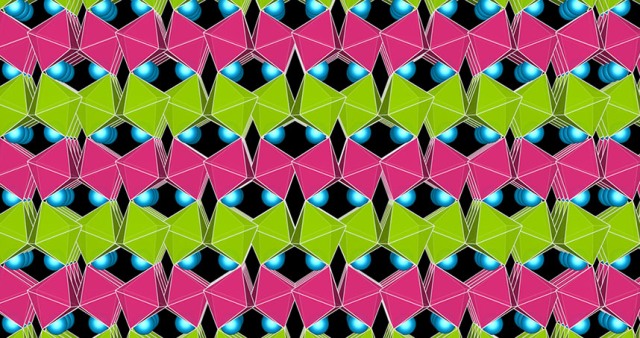Aug 25 2015
James Rondinelli and his team from Northwestern Engineering have proposed a new design strategy to integrate ferromagnetism and ferroelectricity at room temperature. These properties hardly occur together in any material under ambient conditions.
 Superlattice structure of lithium osmate and lithium niobate
Superlattice structure of lithium osmate and lithium niobate
A wide range of technological devices, from spinning disc of a computer’s hard drive to the varying current in a transformer, is operated by combining electricity and magnetism. However, it is quite challenging to identify a material, which exhibits both electric polarizations and magnetizations.
The class of materials to which the invention belongs is known as multiferroics, which is a combination of two or more fundamental ferroic properties.
“Researchers have spent the past decade or more trying to find materials that exhibit these properties,” said Rondinelli, assistant professor of materials science and engineering at the McCormick School of Engineering. “If such materials can be found, they are both interesting from a fundamental perspective and yet even more attractive for technological applications.”
The material must have insulating characteristics so as to induce ferroelectricity. Almost every recent approach emphasizes on the identification of multiferroics in insulating magnetic oxides. Rondinelli’s team used a different approach wherein it studied a metallic oxide, lithium osmate, with a structural disposition to ferroelectricity using quantum mechanical calculations. Then, the material is sandwiched between an insulating material, lithium niobate.
Lithium osmate is a non-insulating and non-magnetic material, while lithium niobate is insulating, ferroelectric and non-magnetic in nature. Rondinelli developed a superlattice with the two materials alternatively staggered, at the quantum scale. As a result, the supperlattice became ferroelectric, ferromagnetic, and insulating at room temperature.
“The polar metal became insulating through an electronic phase transition,” Rondinelli explained. “Owing to the physics of the enhanced electron-electron interactions in the superlattice, the electronic transition induces an ordered magnetic state.”
This new approach for developing multiferroics holds promise in bringing up new possibilities for electronics like logic processing and new kinds of memory storage. Multiferroic materials provide the chances of controlling magnetic polarizations using an electric field, and hence, they could also be used in low-power electronics.
“Our work has turned the paradigm upside down,” Rondinelli said. “We show that you can start with metallic oxides to make multiferroics.”
The study findings are published in the August 21 issue of Physical Review Letters. The paper’s first author is Danilo Puggioni, a postdoctoral fellow in Rondinelli’s lab. Researchers at the International School for Advanced Studies in Trieste, Italy, also contributed to this work.